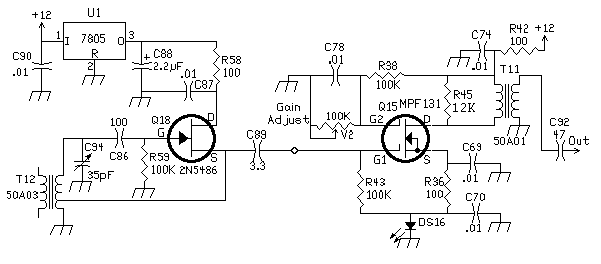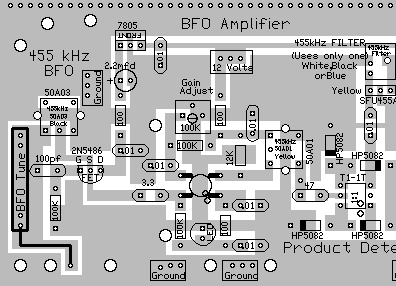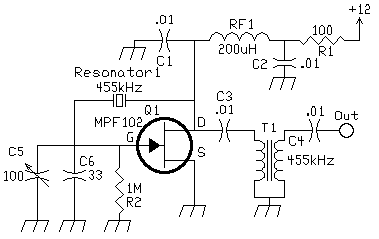





 This circuit is documented in the Super Receiver section and represents a huge improvement in stability over the one in the receiver. Another circuit that would adapt very well to the receiver with very few modifications is at the following URL: n19 Experiments with ceramic resonators LA8AK uses a Ceramic 455kHz IF filter (Fig 6, near bottom of page - Ceramic filter as 455kHz BFO, G8SEQ Radcom TT, Oct 2002, pg 64) as the resonating element and uses either a CMF or CFS 455kHz filter to make a BFO. |

|
"Ceramic Resonators for Cheap and Cheerful VFOs", by Jack Ponton, GM0RWU. Also check out "Mixer VFOs for the HF bands." "Voltage Controlled Oscillator Uses Ceramic Resonators", By Albert D. Herlfick, K2BLA, Ham Radio, June 1985, pp 18-26. "A High-Stability BFO for Receiver Applications", subtitled "Two VCXOs Work Together to Provide High Performance", By Peter J. Bertini, K1ZJH, Ham Radio, June 1985, pp 28-31. Ceramic Filter and Resonators This page investigates ceramic filters and resonators and explains what a ceramic filter is and how you can use it. |
Send E-Mail || Amateur Radio Receivers || Electroluminescent Receiver

